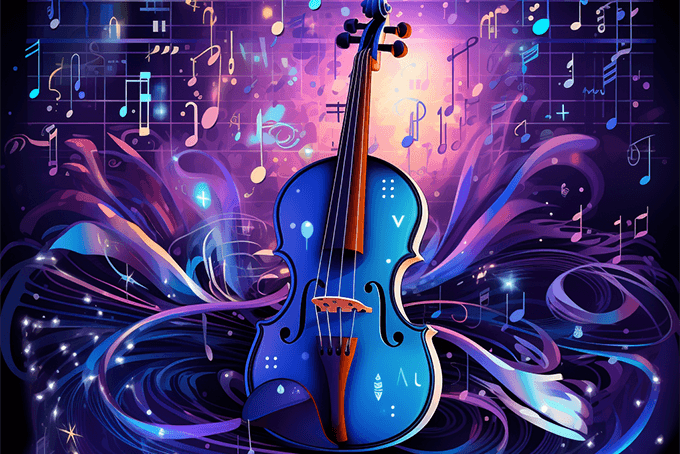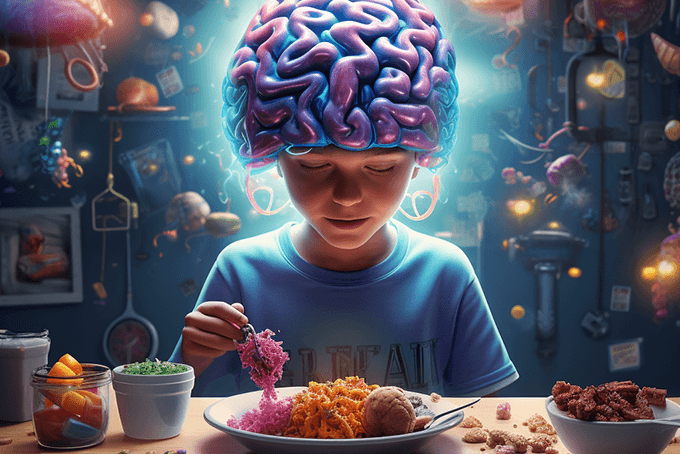As you endure your child’s horrid noises while he attempts to play the violin, recorder, or piano, just remember that along with learning how to play a musical instrument, he is boosting his brain for learning and understanding math. Yes, the brain finds music and math to be a happy combination, so encouraging your child to continue pounding away at that piano is a good thing if you want him to be able to properly balance his checkbook later in life.
The brain is divided into two hemispheres –the right and the left. The left-brain is in charge of rational thought and logical sequencing. The right brain takes over when dealing with creativity. Most individuals lean toward the left-brain, but some are more right-brained. The goal is to use both sides of the brain to their greatest potential to create a complete human being. Kids are able to find ways of doing this through expressing themselves creatively – which includes playing an instrument.
Music and Math
Playing and understanding music is fun, and also challenging. For those of us that were part of orchestra or band in our educational years, we remember the challenges of keeping the steady beat, learning how to read sheet music, and working together with a group to create somewhat beautiful music. The thing is, there is more math involved in the process than we think. Integrating learning math with music is beneficial to both learning a musical instrument and honing math skills – and potentially offers children skills that will benefit them for years to come.
There have been many studies that link listening to music to improving test results, coined the “Mozart Effect.” Research by Dr. Francis Raucher and Dr. Gordan L. Shaw of University of California Irvine found when children were regularly exposed to classical music, they were better able to perform spatial tasks, such as learning concepts easily, problem solving, and accomplishing challenging activities. Although there is no research proving that exposing babies to classical music while in the womb promotes math skills later in life, playing music for children of all ages offers the opportunity for them to hear patterns and rhythms in music that they are able to respond to and recognize over repeated exposure.
It is even thought that Mozart himself used mathematic concepts to create his enjoyable music. The golden section – the precise way of dividing a line, musically or mathematically, may have played a role in Mozart’s musical creations. Music is comprised of beats, which add up to create sections similar to concepts found in mathematical equations. So, it adds up that music and math intertwine in ways that entice the brain to combine its creative and logical sides into one.
The Brain Connection
Most mathematical calculations have solutions, and understanding the pattern leads to greater learning. According to Raucher, children that are offered instrumental instruction had higher test scores and were able to better accomplish tasks using spacial-temporal cognition, hand-eye coordination and arithmetic. Raucher also finds there is a strong link between visual and spatial skills that are used when children play and practice playing music. When children spend time practicing an instrument, they also pay attention to detail and are disciplined, which are valuable skills needed when learning challenging math concepts. This strengthens the mental-physical connection in the brain and body.
The concept of spatial-temporal reasoning is the ability to visualize patterns, come to solutions, and understand multi-stop problems. Most often, these are concepts associated with math, but spatial-temporal reasoning is essential to our everyday life. When children are exposed to music, through either playing or listening, neurons in the brain fire, causing certain parts of the brain to engage, and even enlarge, in certain cases. The cortex, responsible for higher thought and development, is stimulated when a child plays or listens to music. The right brain is stimulated through expressing itself creatively by playing music, and the left is encouraged through making logical decisions while reading sheet music and playing the instrument. This means the brain works together, which as stated earlier, optimizes brain functions.
Encouraging the Music and Math Connection
Through all the research pointing to the theory that young children’s brains are hard-wired to receive and decode music (through playing and listening), providing wonderful benefits in the areas of math, it would seem logical that every school would include musical education in their programs. But, many schools are unable to fund musical instruction, so they offer a musical curriculum based on singing songs and listening to music. Parents can encourage music and mathematical knowledge through seeking out private music lessons or encouraging musical exploration in the home. Offering children musical instruction in an open and age-appropriate way offers young children the opportunity to develop at their own pace without pressure.
Ideas for Incorporating Music and Math
- Provide children with instruments they can use to shake or tap in rhythm with music they are listening to at their own pace. Finding the rhythm within music and being able to keep the beat is the beginning connection between music and math. Allowing young children to make this connection in their own time encourages their confidence and beginning understanding of music and math.
- Encourage children to read a story while keeping the beat by tapping a tambourine or clapping. Even language has a beat, and chanting or rhyming also encourages the brain to think in a linear mathematical way.
- Have children listen to music and express themselves through dance, or by using scarves to move and sway to the beat. Encouraging children to move differently to varying sounds or rhythms also motivates the brain to categorize sounds and understand patterns within music.
The next time your child is pounding away on the family piano or screeching while practicing the recorder, just remember, his brain is learning in amazing ways, and eventually he will be making wonderful music and hopefully completing those challenging algebraic equations with ease!



